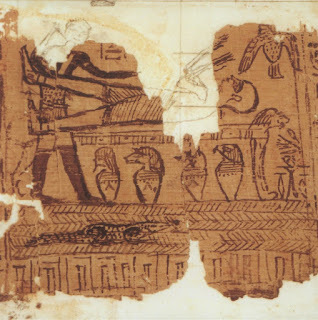In 1967, some of the ancient Egyptian papyri that LDS leader Joseph Smith claimed to translate as The Book of Abraham (part of the LDS scripture "Pearl of Great Price") was discovered.
Since even before that time, debate has raged over what the scrolls of papyri really say. Faithful Mormons accept Smith's claims. Most academics who have studied the papyri -- photos of which were made available by The Church of Jesus Christ of Latter-day Saints -- have concluded that they are funerary texts.
The debate has heated up in recent years with a book, "The Joseph Smith Egyptian Papyri: A Complete Edition," published by the Smith-Petit Foundation and distributed by Signature Books, both of Salt Lake City.
It is a complete translation of all of the papyri that we have on what is claimed as The Book of Abraham.
The translator is Egyptologist Dr. Robert Ritner, of the University of Chicago's Oriental Institute. The book also includes essays, from other scholars, which cover how the Mormons acquired the papyri texts, as well as explorations of subjects associated with the texts.
Ritner does not support Smith's claims about the texts. They are ordinary funerary texts of that era, he maintains, with no relationship to Abraham, Joseph or other LDS doctrines.
"I don't care what people believe, but if (they) are going to say that the papyri say something, then it falls under my expertise," says Ritner.
Ritner's criticisms are sometimes barbed and directed at LDS scholars, such as the late Hugh Nibley and Brigham Young University Egyptologist John Gee, a former student of his.
One critique Ritner has of Smith's translations is that the LDS Church founder "could not distinguish deities from humans, females from males, or even human from animal figures!" (In a footnote, Ritner adds, "Smith mistook Osiris, Maat and Anubis as humans rather than gods, Isis and Maat as male, and the jackal Anubis as human.")
"You can have faith, but you can't have scholarship," says Ritner, who adds that one value of Smith's translations is the connection to how Egyptian artifacts were regarded in the Western world in the first half of the 19th century. A traveling salesman sold mummies and papyri to the young LDS Church in 1835 for the equivalent of $60,000 today.
To Ritner, the "case is closed." What Smith claimed, and the LDS Church claims today, is simply false, he says.
Ironically, that certainty of Ritner's may be the weakest point of his arguments. One can make a case that to draw any conclusion that science is settled can be called unscientific.
With ancient Egyptian-era digs going on in the world, it's an audacious claim to say that part of a book that millions regard as scripture is forever concluded to be a hoax.
Many LDS scholars and academics also provide counter arguments. One LDS scholar, who declined to be quoted in this story, said there are other theories on how to translate grammar in the ancient records.
Also, he took issue with the definition of "funerary texts," arguing that in Egyptology, any scrolls or papyri found in a burial can be called "funerary texts," regardless of the subject matter. Even if it's a pharaoh stealing brides and putting priests to death, if it's found in a burial, it can be classified as a "funerary text," even if that's inconsistent, he maintains.
LDS scholars also believe that the lost papyri contain more information. Ritner disagrees. He says that, based on the several years of research and translation that he completed, there cannot be large texts of funerary text missing. Funerary information isn't that large.
The debate over The Book of Abraham will likely never end. Perhaps the most argumentative position is skepticism with how modern Egyptologists interpret ancient Egyptian texts.
In "A Method for Studying the Facsimiles," from a 2007 FARMS review article, Gee writes, "One temporary conclusion must be stressed: To date there has been no methodologically valid interpretation of any of the facsimiles from an ancient Egyptian point of view."
That's a position that Ritner would, in this case, disagree with. But certainly more will be published.
The debate rages on. Call it "the mummy's curse."
-- Doug Gibson
-- Originally published at StandardNET


No comments:
Post a Comment